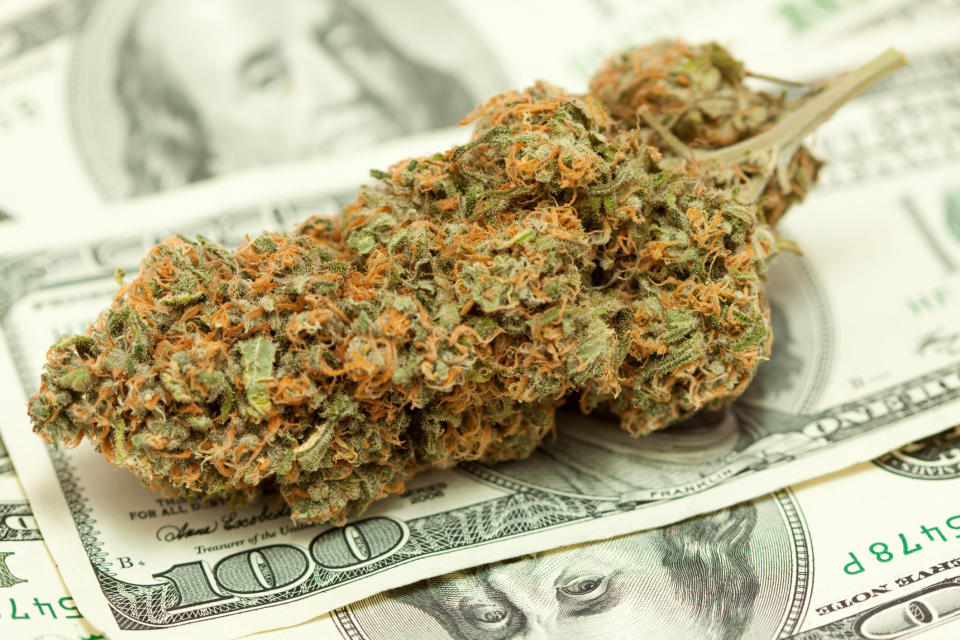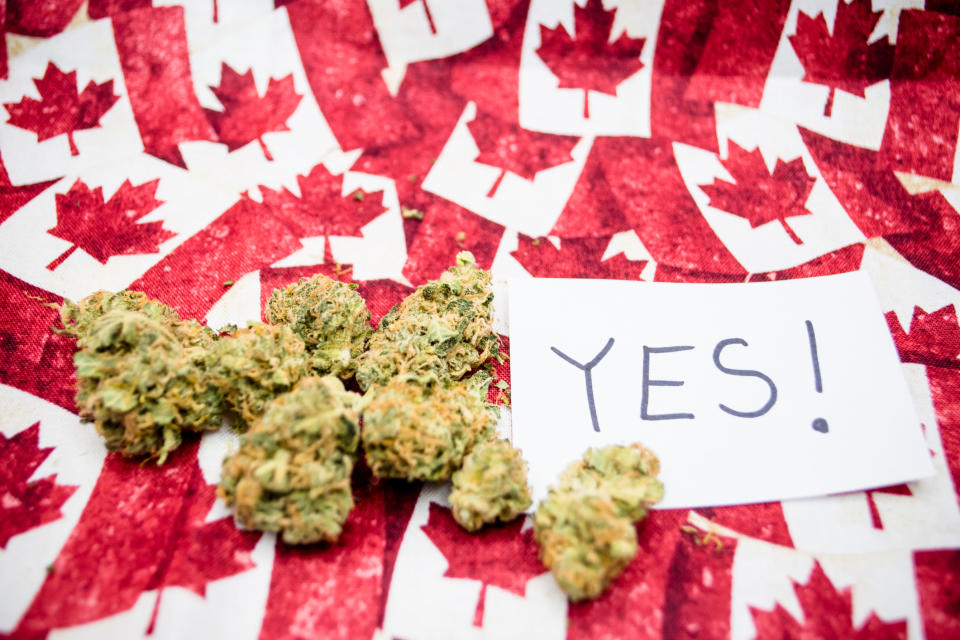A Detailed Look at How Aurora Cannabis Generated Revenue in the Third Quarter
There might be no industry more popular among investors right now than marijuana; and there's good reason for that. The cannabis industry is expected to grow by as much as 19% a year on a compound annual basis between 2015 and 2030 -- that's if projections of $75 billion in annual worldwide sales by 2030 from Cowen Group prove accurate. But if this estimate holds up, investors in pot stocks would stand to make bank.
Although there are dozens upon dozens of marijuana stocks for investors to choose from, none has been more polarizing than Aurora Cannabis (NYSE: ACB). Edmonton-based Aurora is poised to lead all growers in annual run-rate production, with the company recently guiding toward a minimum of 625,000 kilos of yearly run-rate output by the midpoint of next year. For added context, only one other grower is expected to reach at least half of Aurora's annual production at its peak.

Image source: Getty Images.
But as the industry matures, the importance of revenue and profit figures comes firmly into focus. Last week, Aurora Cannabis lifted the hood on its fiscal third quarter (Jan. 1, 2019 – March 31, 2019) and gave investors a view of what's been going on with its business, down to the minutest of details. With this in mind, and with Aurora's management discussion and analysis (MD&A) filing at hand, let's take a detailed dive into how, and where, Aurora generated revenue in the third quarter.
The big picture
For the third quarter, Aurora generated 75.24 million Canadian dollars (about $56 million) in gross sales, and CA$65.15 million in net sales. The difference between the two figures represents the amount of revenue that the company lost due to excise taxes in Canada. These excise taxes have been directly responsible for pushing average net selling prices per gram of dried cannabis down for most growers.
Aurora generates the bulk of its sales by selling marijuana, but offers a number of services that also bring in revenue. Let's first examine every facet of its marijuana operations, and at the end we'll swing back and look at how its ancillary businesses factored into its quarterly sales.
How cannabis brings in the green for Aurora
Of Aurora's CA$65.15 million in Q3 2019 net sales, CA$58.65 million (90% of sales) was derived from selling cannabis and derivative products. In the quarters that lie ahead, the percentage of weed-based revenue to ancillary revenue should increase.

Image source: Getty Images.
In a shift from the previous quarter, Aurora recorded more recreational marijuana sales than medical cannabis revenue, albeit the two were very close. Aggregate net recreational sales totaled CA$29.58 million, with CA$29.08 million recorded in net medical cannabis revenue. When rounded, this is a 50-50 split between medical and recreational revenue, which is not unexpected given the company's stated focus on the medical marijuana market.
With regard to the medical cannabis sales, CA$16.58 million was related to dried flower, CA$8.5 million was from extracts (e.g., oils), and CA$4 million was brought in from dried cannabis sales via European Union supply agreements. This CA$4 million in international sales represents 6.1% of net revenue, and 6.8% of cannabis-derived net sales, and it's a number that should grow substantially in the years to come.
As for recreational weed, CA$27.46 million of CA$29.58 million was sold as dried cannabis, with CA$2.12 million in extracts. The high percentage of dried flower being sold to the adult-use market shouldn't be a surprise given that a good portion of these sales are part of wholesale agreements with seven of Canada's provinces.
Aurora's MD&A notes that Quebec, Alberta, and Ontario accounted for 29%, 27%, and 24% of the CA$29.58 million in consumer sales, with British Columbia, Nova Scotia, Prince Edward Island, and Saskatchewan comprising the remainder at 9%, 6%, 2%, and 1%, respectively. (The figures don't add to 100% due to rounding.)
Altogether, Aurora sold approximately CA$44 million in dried cannabis domestically, CA$4 million in dried cannabis abroad, and just over CA$10.6 million in extracts (18.1% of total cannabis sales) in the third quarter.

Image source: Getty Images.
Wrapping things up with Aurora's ancillary operations
Aurora's ancillary sources of revenue accounted for CA$6.49 million in sales in the third quarter, up from CA$5.29 million in the prior-year quarter.
The company's five ancillary channels generated sales as follows:
Design, engineering, and construction services: CA$0.91 million
Patient counseling services: CA$0.81 million
Analytical testing services: CA$1.24 million
Accessories and other cannabis segment revenue: CA$0.96 million
Horizontally integrated business sales: CA$2.57 million
Aurora acquired greenhouse design and construction company Larssen in 2017. It's a bit surprising that the business generated less than CA$1 million in sales in Q3, and only CA$2.4 million in revenue through nine months of fiscal 2019. With capacity expansion still on most growers' plates, one would think Larssen would be extremely busy.
On the other hand, horizontally integrated business revenue has nearly tripled through the first nine months of fiscal 2019 from the same time frame in fiscal 2018.
Folks, this may be a lot of numbers to comprehend, but if you're following (or own) the most popular pot stock in the world, these are important figures to know.
More From The Motley Fool
Sean Williams has no position in any of the stocks mentioned. The Motley Fool has no position in any of the stocks mentioned. The Motley Fool has a disclosure policy.

 Yahoo Finance
Yahoo Finance 